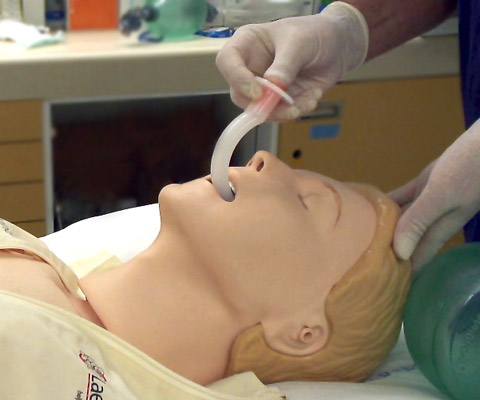Oropharyngeal Airway
For adults, the device should be inserted into the mouth upside down, then turned through 180 degrees when the tip of the airway contacts the soft palate (Fig 1).
In children, insertion of the airway is under direct vision. The device is not rotated.
Question: Why is the device inserted upside down?

For adults, the device should be inserted into the mouth upside down, then turned through 180 degrees when the tip of the airway contacts the soft palate (Fig 1).
In children, insertion of the airway is under direct vision. The device is not rotated.
Question: Why is the device inserted upside down?
Answer: Inserting the device upside down minimizes the risk of forcing the tongue backwards during insertion, obstructing the airway (Fig 2).
Select play to view the video.
For adults, the device should be inserted into the mouth upside down, then turned through 180 degrees when the tip of the airway contacts the soft palate (Fig 1).
In children, insertion of the airway is under direct vision. The device is not rotated.
Question: Why is the device inserted upside down?
Answer: Inserting the device upside down minimizes the risk of forcing the tongue backwards during insertion, obstructing the airway (Fig 2).
Select play to view the video.
